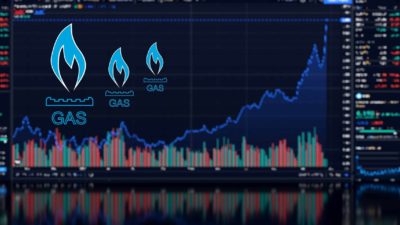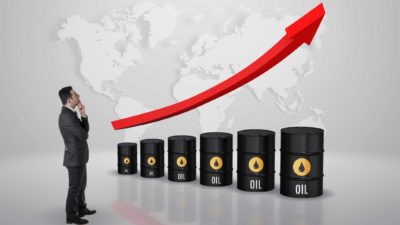S&P/ASX 200 Index (ASX: XJO) energy shares are in the green today, despite increasing pressure from the government to divert more gas from exports into the domestic market.
At the time of writing the S&P/ASX 200 Energy Index (ASX: XEJ) is up 1.3%, compared to a 0.3% gain posted by the ASX 200.
Oil and gas giant Woodside Energy Group Ltd (ASX: WDS) shares are up 1.7% while ASX 200 energy share Santos Ltd (ASX: STO) is up 0.5%.
The Origin Energy Ltd (ASX: ORG) share price is in the green as well, up 0.8%.
This comes after the Australian Competition and Consumer Commission (ACCC) released its latest interim report on the nation's tightening gas situation, and as the government works to finish its revamp of the Australian Domestic Gas Security Mechanism (ADGSM).
What is the ACCC reporting on Australia's energy crisis?
If you haven't noticed an unpleasant uptick in your power bills yet, just wait.
Coal power plants have suffered some unexpected slowdowns; renewable energy sources do not have the capacity to meet current demand; and we've had years of underinvestment in new gas field exploration and development, particularly in Victoria and New South Wales.
All this has combined to form a looming energy crisis, fuelled by Russia's invasion of Ukraine.
Add into the mix that ASX 200 energy shares export much of their gas to international markets, and the ACCC has raised the alarm.
According to the report, released today:
The domestic east coast gas market uses a relatively small proportion of the total east coast gas production each year. For 2023, AEMO forecasts that domestic east coast gas demand will be around 571 PJ, requiring approximately 29% of all the gas expected to be produced for the year.
However, if all the excess gas of LNG exporters is sold in overseas markets then the domestic east coast gas market is likely to be 56 PJ short of gas needed to meet forecast demand for 2023. This is a worse situation than that which occurred in 2017…
The Commission warned that surging gas prices could see more Aussie manufacturers shutter.
Responding to the report, Treasurer Jim Chalmers said it unmasked some "alarming features of the east coast gas market".
Commenting on the potential for the government to pull the so-called emergency trigger, and what consumers and ASX 200 energy shares can expect next, Resources Minister Madeleine King said (courtesy of The Australian Financial Review):
We're talking about the existing ADGSM because of the impact of it not having been renewed, I'll have to wait a couple of weeks for that trigger, so to speak, to be available. And then there'll be a notice of intention issued because of the evidence presented in the ACCC report.
And then there is a period of a couple of months where, not just the gas companies but everyone, gets to provide information to me to then make an assessment as to whether to take the next step, which is going further with the mechanism. So, it's quite complicated. It should be complicated, quite frankly, because these are serious export controls we're talking about.
ASX 200 energy shares can supply adequate domestic gas
Damian Dwyer, acting head of the Australian Petroleum Production & Exploration Association, said that ASX 200 energy shares are able to meet Australia's gas needs and they will do so.
"Gas customers can be assured supply will be adequate next year so households and businesses can continue uninterrupted," he said. "There has never been an actual shortfall and there will not be one next year. This is the ACCC signalling that action is needed, and the industry will act."








